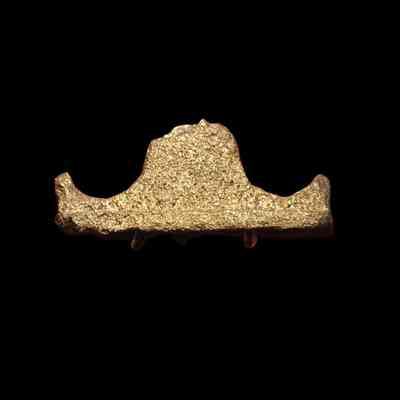Hilt Guard
Name/Title
Hilt GuardEntry/Object ID
L.2021.29Description
Copper alloy hilt guard from the Roman site at NewsteadUse
The guard would be at the hilt of the sword, and was used to protect the sword user's hand.Context
James Curle discovered Celtic swords in the pits at Trimontium along side the Roman swords. He attributes the style and simplicity of this guard to be a common design used by the Late Celtic people. British Celtic swords are rare to find due to the corrosion and rusting of their iron make in the acidic Scottish soil. The copper alloy make of the guard can survive the acidity of the soil, and therefore more sword guards are typically found then the swords.Collection
National Museums ScotlandCategory
Sword
Military Equipment & Weaponry
Acquisition
Accession
X.FRA 150Source (if not Accessioned)
National Museums ScotlandNotes
LoanMade/Created
Time Period
1st - 2nd centuryEthnography
Cultural Region
Continent
EuropeCulture/Tribe
Celtic

